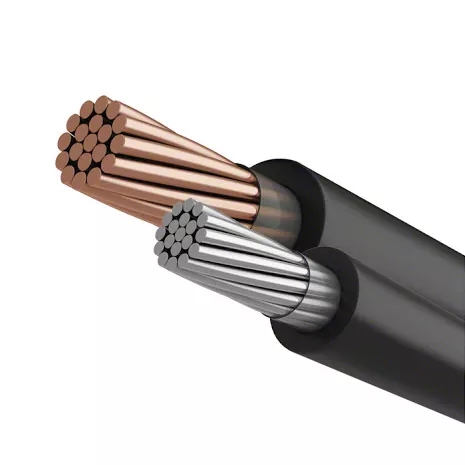 English
English Español
Español  Português
Português  русский
русский  Français
Français  日本語
日本語  Deutsch
Deutsch  tiếng Việt
tiếng Việt  Italiano
Italiano  Nederlands
Nederlands  ภาษาไทย
ภาษาไทย  Polski
Polski  한국어
한국어  Svenska
Svenska  magyar
magyar  Malay
Malay  বাংলা ভাষার
বাংলা ভাষার  Dansk
Dansk  Suomi
Suomi  हिन्दी
हिन्दी  Pilipino
Pilipino  Türkçe
Türkçe  Gaeilge
Gaeilge  العربية
العربية  Indonesia
Indonesia  Norsk
Norsk  تمل
تمل  český
český  ελληνικά
ελληνικά  український
український  Javanese
Javanese  فارسی
فارسی  தமிழ்
தமிழ்  తెలుగు
తెలుగు  नेपाली
नेपाली  Burmese
Burmese  български
български  ລາວ
ລາວ  Latine
Latine  Қазақша
Қазақша  Euskal
Euskal  Azərbaycan
Azərbaycan  Slovenský jazyk
Slovenský jazyk  Македонски
Македонски  Lietuvos
Lietuvos  Eesti Keel
Eesti Keel  Română
Română  Slovenski
Slovenski  मराठी
मराठी  Srpski језик
Srpski језик
Let's learn more about solar cable
2023-11-14
THE TYPE OF SOLAR CABLE
There are several types of solar cable as fellows:
✱Single Core Solar Cable: This type of cable is designed for use in grid-tie systems where solar panel output is 1kV or less. It is UL and TUV certified and has UV-resistant insulation.
✱Twin Core Solar Cable: This type of cable is used in off-grid and grid-tie solar panel systems, allowing for the connection of two solar panels to a single string. It is also UL and TUV certified and has UV-resistant insulation.
✱Solar PV Cable: This type of cable is used for connecting the solar PV module to the inverter, and from the inverter to the power distribution system. It has UV-resistant insulation and is available in single and twin core configurations.
Armoured Solar Cable: This type of cable is designed for use in harsh environments where the cable is exposed to external mechanical damage or rodents. It has steel wire armouring that provides additional protection and is available in single and twin core configurations.
✱Tray Cable: This type of cable is designed for use in conduit, cable trays, and wireways. It is available in multiple conductors and has a dual-rated insulation that is both flame-retardant and UV-resistant.
Overall, the selection of the solar cable will depend on the specific application and the environmental conditions in which it will be used.
The composition of pv solar cables (photovoltaic) solar cables are specifically designed for use in photovoltaic systems and their composition generally includes the following layers:
Conductor: The conductor is the core of the cable and is typically made of copper or aluminum wire that is stranded together in multiple layers to increase flexibility and durability.
●Insulation: The insulation layer is applied around the conductor to prevent electrical arcing and ensure that the current flows through the cable to the load. The insulation material used is typically a type of cross-linked polyethylene (XLPE) or ethylene propylene rubber (EPR) that is heat and UV-resistant.
●Jacket: The jacket is the outermost layer of the cable and is designed to protect the cable from mechanical stress, UV radiation, and environmental hazards. The jacket is usually made of a thermoplastic material that is flame-retardant, oil-resistant, and water-resistant.
●Shielding: Some PV solar cables may include a shielding layer that goes over the insulation and around the cable to protect against electrical noise and interference.
Tinning treatment: often, the copper core of PV cable is treated with a process called tinning to protect it from corrosion, which improves the long-term performance of the cable.
●Certification marks: All PV solar cables need to be certified to industry standards, such as UL and TUV, to ensure they meet safety and performance requirements in solar applications.
The composition of a PV solar cable is designed to provide durability, flexibility, and protection against electrical, mechanical, and environmental factors. The choice of materials and quality of construction are critical to ensure high efficiency, low power loss, and a long lifespan of the solar cabling system.
The use of PV solar cable
DAYA PV (photovoltaic) solar cables are specifically designed for use in solar power systems. The primary use of PV solar cable is to connect the solar PV panel to the inverter, which converts the DC (Direct Current) power generated by the solar panel to AC (Alternating Current), which can be used in homes and businesses. The PV solar cable transmits this electrical energy in the form of DC power to the inverter.
DAYA PV solar cables are designed to withstand the harsh outdoor environment, including weather conditions such as rain, wind, and snow. They are also UV-resistant, so they can handle exposure to direct sunlight without breaking down over time.
In addition to the transmission of electrical energy generated by the solar panel, PV solar cable is also used to connect various components of the solar panel installation, such as solar voltage regulators, battery storage units, and DC lighting systems.
Overall, the use of DAYA PV solar cable is crucial in ensuring the safe and efficient transmission of electrical energy generated by the solar PV panel to the grid or electrical load.




